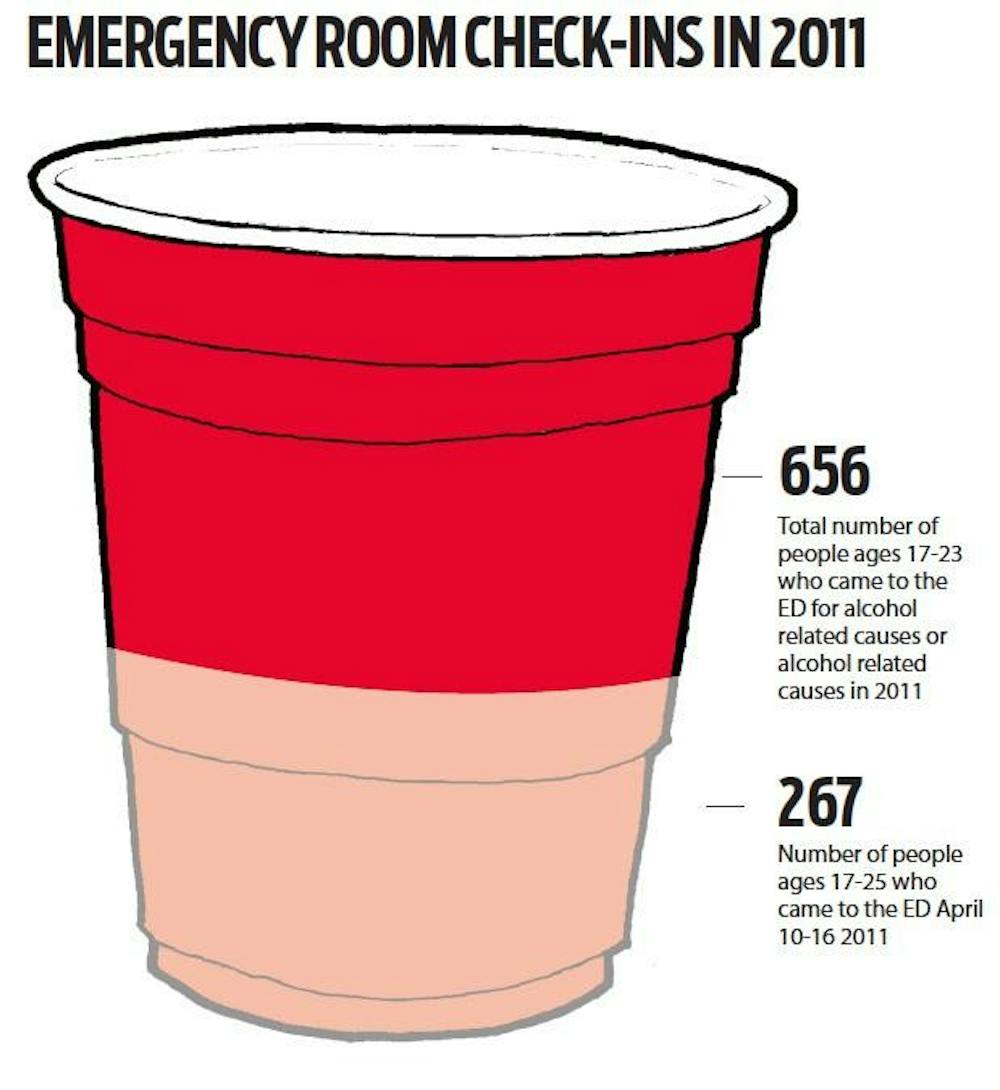During the days leading up to the 2011 Little 500 race, 267 patients between the ages of 17 and 23 were admitted to the Emergency Department of the IU Health Bloomington Hospital.
There were 656 patients of that same age group who were admitted to the ED during the 2011 Little 500 celebrations for alcohol-related reasons.
“We actually had lower numbers than we’ve had in the past couple of years, but we still did see quite a few intoxicated students,” said Kitra Ludlow, manager of the emergency department at Bloomington Hospital.
Ludlow said she had not yet counted the amount of patients admitted to the department from the 2012 Little 500 week.
This year, Ludlow said a common complaint during Little 500 weekend was abdominal pain and that she saw several cases of soft tissue injuries with bike riders.
More on-site nurses and advanced practice providers were added to the staff to prepare for the volume of patients who use the emergency services at the hospital during this time of year.
During the weekend, most of the patients were brought in from emergency medical services, spent a few hours at the hospital and were either sent home or to jail.
This year, police issued a record number of 258 tickets, up from 167 last year, during the Little 500 celebrations, according to the Indiana State Excise Police.
Most of those tickets were issued to people who were visiting from another school in Indiana and other states.
Ludlow said the emergency department takes in an average of 170 patients daily, except during Little 500.
Hugh Jessop, executive director and chief financial officer for IU Health Center, said there was very little change in the amount of patients at the clinic before and after the bike race.
IU Health has provided on-site medical services for the men’s race since it began in 1951, as well as for women 25 years ago when they had their first race.
The riders’ injuries that do not require hospitalization are treated on-site and then followed up at the health center if necessary, Jessop said.
Patient visits decrease during Little 500 week

Get stories like this in your inbox
Subscribe





